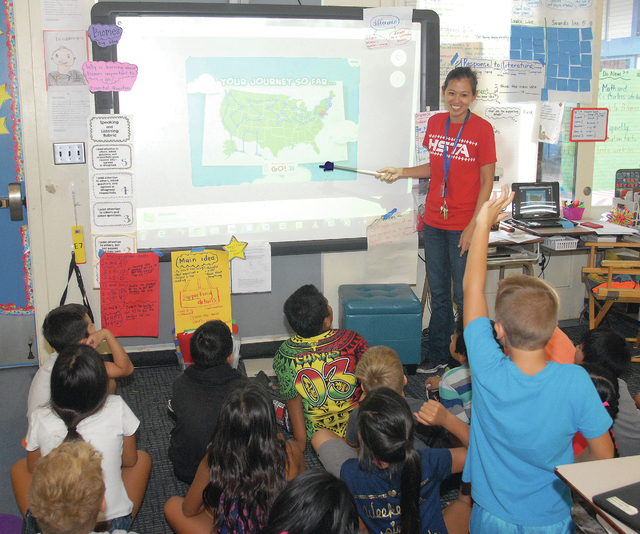KAILUA-KONA—The superintendent for the West Hawaii Complex Area and the principal of the area’s largest school are both embracing the Department of Education’s new strategic plan, a plan they say finally puts more focus on educating “the whole child.” ADVERTISING
KAILUA-KONA—The superintendent for the West Hawaii Complex Area and the principal of the area’s largest school are both embracing the Department of Education’s new strategic plan, a plan they say finally puts more focus on educating “the whole child.”
“I think it gives us an incredible opportunity that we have not had in our state,” said Art Souza, superintendent of the West Hawaii Complex Area.
Throughout the year, school officials have been working on revamping the state’s strategic plan, which is designed to guide the department in creating successful learning environments and opportunities.
In parallel, other teams at the Department of Education have been developing a “blueprint” for the federal Every Student Succeeds Act as well as a plan to be sent to the feds about how that law will be implemented in schools.
While each document has its own unique purpose, Souza said he’s encouraged by how much overlap there is.
“There’s so much overlap and so much connectivity,” he said. “I am encouraged all three plans really stress the needs of the whole child.”
Kealakehe High School Principal Wil Murakami said after going through the plan, he’s found it to be “very consistent with what we’ve been doing at the high school.”
The strategic plan, which the Board of Education approved at the beginning of December, focuses on three overarching goals: student success, staff success and successful systems of support.
Each of those goals has associated objectives and student success indicators, setting hard benchmark targets for DOE schools to hit by 2020.
For example, the chronic absenteeism indicator, associated with the “student success” goal, sets a 2020 target of 9 percent for students who miss at least 15 days of school during the school year. That would be a decrease of six percentage points from the 2016 base.
Likewise, the department has set a goal of having 98 percent of teacher positions filled by 2020, an increase of two percentage points from 2016.
Both Souza and Murakami are embracing the focus on a whole child approach by the department.
“It has always been our focus … to educate the whole child,” Murakami said.
The two administrators also lauded the efforts of the department to create an inclusive process in developing the strategic plan.
During its development, department representatives traveled throughout the state gathering input from stakeholders about the direction in which they wanted to see Hawaii’s schools move.
Murakami said he was impressed with their efforts.
“They put out tremendous resources to get out to the field,” he said. “There has never been an effort like this to really get input from all stakeholders.”
Souza agreed.
“A tremendous effort has been made to get community voices,” he said.
The superintendent said a big element of the strategic plan is expanding education to beyond the classroom.
“The school cannot do all this work alone,” he said, adding that is why it’s important to create opportunities for “the community to become the school.”
Murakami pointed to school programs and after-school activities as opportunities that keep children learning in environments that don’t take place in the traditional classroom during the traditional school day.
One example is the Kealakehe Student Credit Union, a program at the school that establishes an operating credit union for students, allowing them to open up accounts, make deposits and withdrawals and learn the basics of financial literacy.
Murakami said that earlier outcomes and indicators were more focused on academic results with a focus on improving test scores.
“Now what they’re saying is we have to balance the scale to focus on the whole child,” he said.
That means that when kids are struggling, efforts need to be made to determine why they are struggling, such as not feeling engaged in the learning process.
“This strategic plan attempts to balance the scale,” he said, citing factors like students’ social and emotional well-being that need to be taken into account.
There’s also enhanced focus on the application of knowledge and skills, he said, not just the acquisition.
“You have this knowledge,” Murakami said, “can you apply it and where can you apply it?”
Doing that, he said, calls on students to “develop a consciousness,” to be high-performing members of their community.



